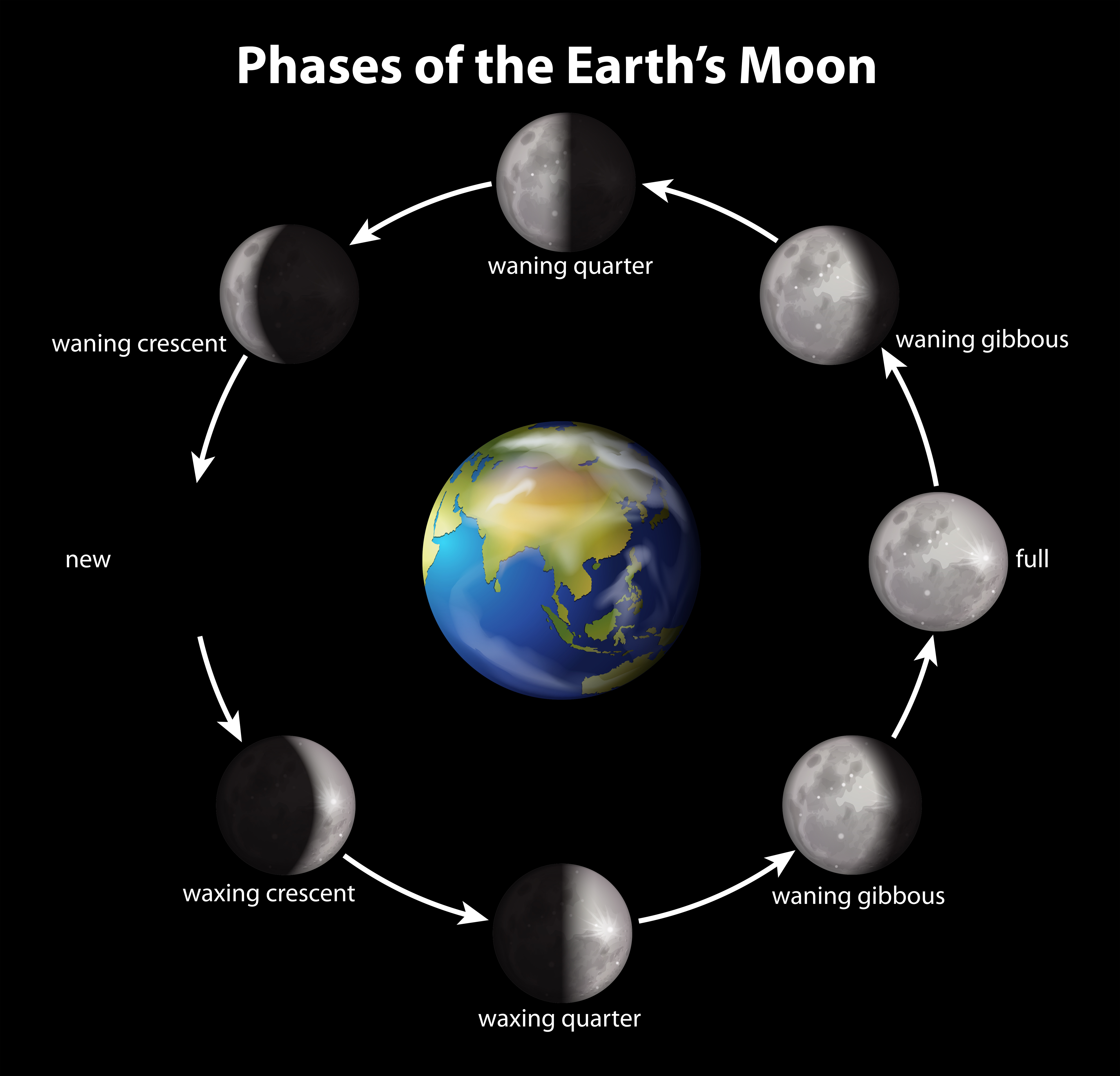

#Moons phases full
If it were, every time there was a new Moon there would be a solar eclipse, and every time there was a full Moon there would be a lunar eclipse. The orbit of the Moon is not in the same plane as the orbit of the Earth, but rather inclined (about 5º) with respect to it.The representation of the Earth, the Moon and the Sun, as well as their distances, are not on a real scale, they only make up a diagram that helps to understand the phenomenon of the phases.In the previous paragraph, the area between the tropics is not considered, since an observer located in that area varies its position with respect to the Earth's orbital plane ( ecliptic) depending on the time of year, which causes the look of the Moon also changes.This change in the moon's appearance is known as the moon's phase. As the moon orbits the Earth, the amount of the moon's illuminated surface visible from the Earth changes. Each lunar eclipse is visible from half of Earth. The moon's phases are determined by the relative positions of the Earth, moon, and sun. When Earth is positioned precisely between the Moon and Sun, Earth’s shadow falls upon the surface of the Moon, dimming it and sometimes turning the lunar surface a striking red over the course of a few hours. Note that, from the northern hemisphere, the Moon "waxes and wanes to the left", while from the southern hemisphere it does so to the right. Lunar Eclipses Lunar eclipses occur at the full moon phase. This latitude influences how the visible side of the Moon looks. As the moon wanes (becoming a half moon and a crescent moon, on the way to a new moon), the moon rises during the night, after sunset, rising later each night. You can also move the latitude from where we observe the Moon. To return to animation, just change the speed. If you want to move it slowly, stop time slider and press the - and + buttons. You can stop the animation by setting the speed to zero or simply by moving the time slider. If you want to see it in detail, stop the animation and check the Visible sky box. This does not affect the moon phase itself, but it is useful to know, approximately, in what interval of hours we can see each moon phase (imagine that you are looking from Earth as indicated by that arrow). The small arrow indicates, when turning, the direction of rotation of the Earth. There are 8 phases: 4 main ( new Moon, first quarter, full Moon and last quarter) and another 4 intermediate between these states. The illuminated part of the Moon that you see from Earth (the part of the white semicircle that is inside the lunar orbit) is the one shown in the right graphic view.
/all-phases-of-the-moon-on-a-clear-dark-sky-516059951-59f0f494685fbe0011fc0523.jpg)
Now imagine you are looking at the Moon from Earth. Keep particular attention to the small white semicircle in the left graphic view: it represents the illuminated part of the Moon (in the construction, the sunlight comes from the left). In this construction you can observe the phases of the Moon.

This activity belongs to the GeoGebra book Earth and Sun.


 0 kommentar(er)
0 kommentar(er)
